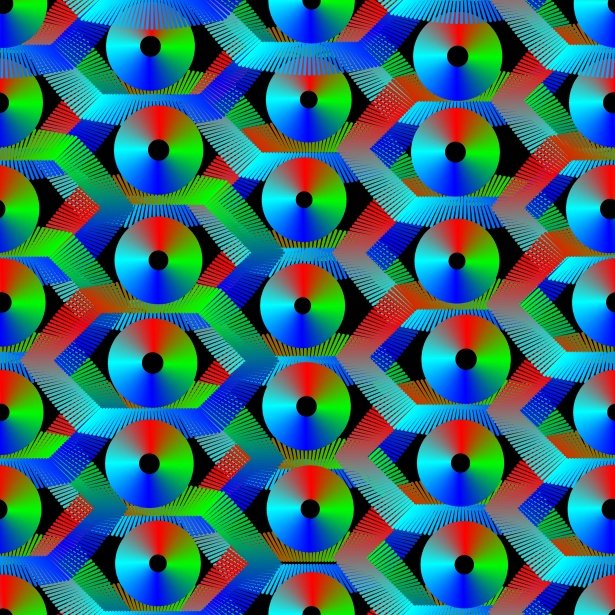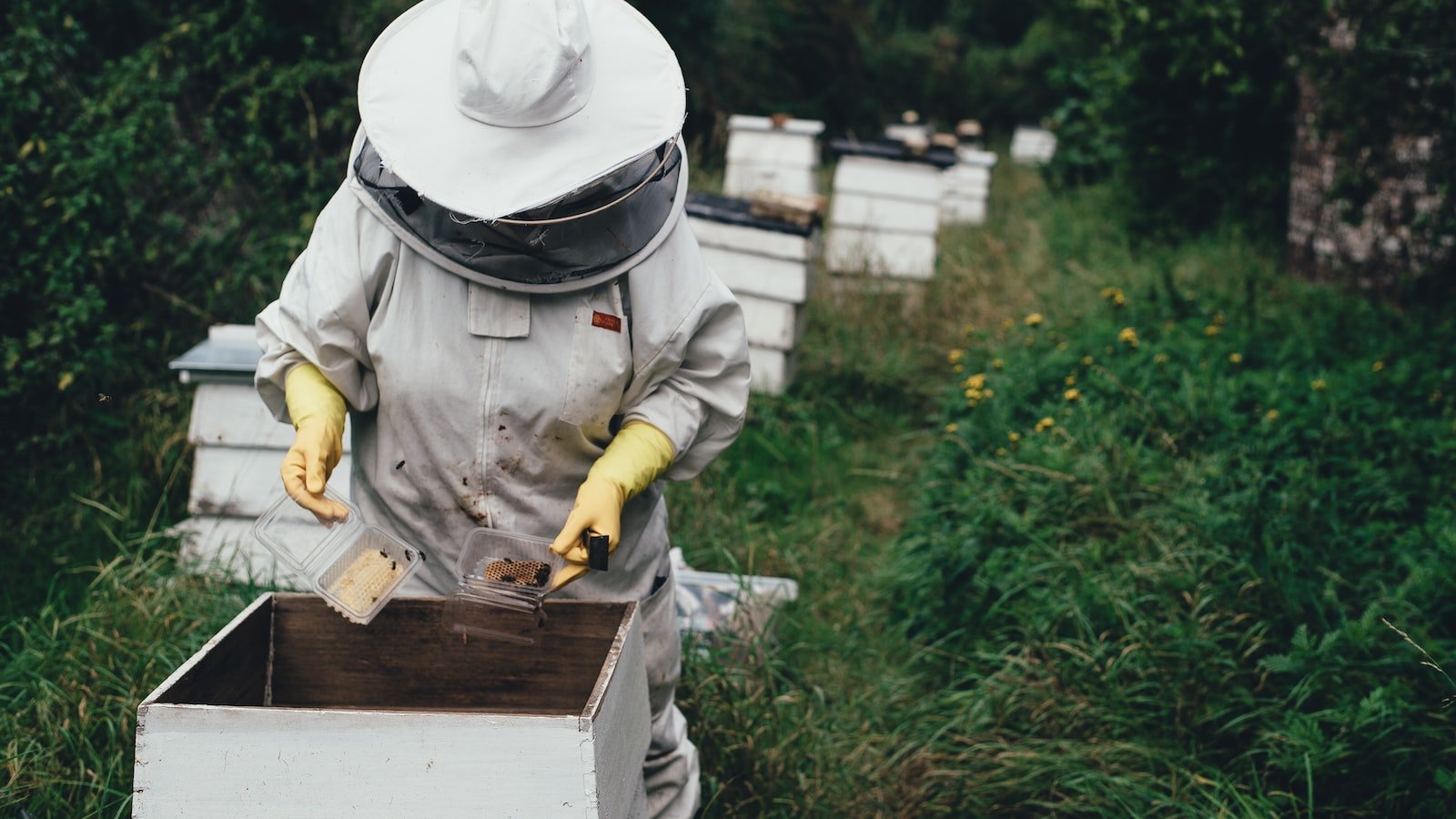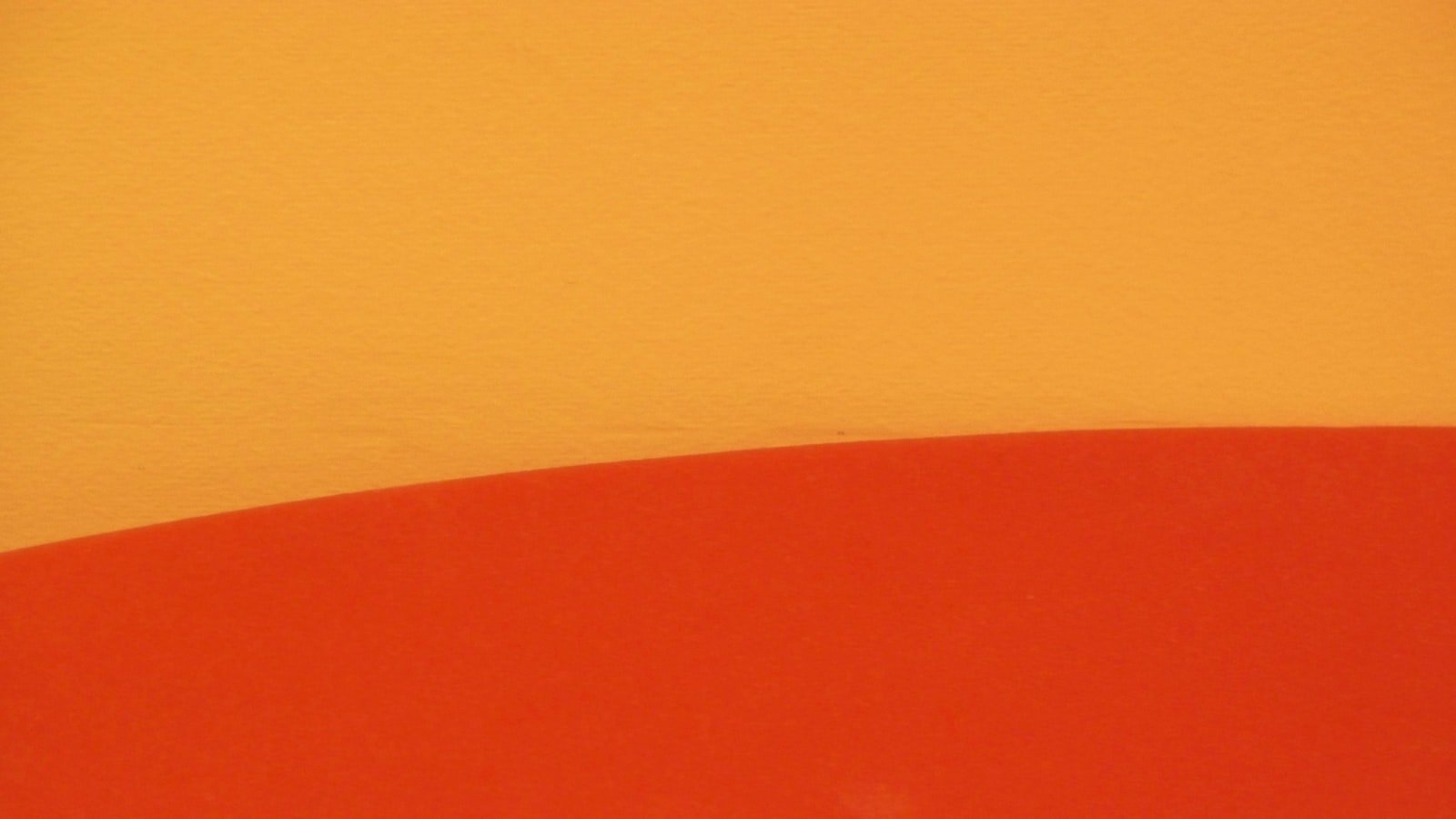Bees, those enchanting and industrious creatures, have captivated humans for centuries with their complex society and remarkable ability to maintain their hives. As keepers of nature’s delicate balance, bees diligently nurture their colonies, fulfilling various roles to ensure the survival and prosperity of their community. Among the numerous factors that contribute to their harmonious coexistence, the color of the hive itself plays a fascinating and influential role in both bee behavior and maintenance. Examining the intricate correlation between hive color and bee behavior unveils a world where visual aesthetics intertwine with instinctive instincts, paving the way for a deeper understanding of these wondrous creatures and the vital role they play in our ecosystem.
Table of Contents
- The Role of Hive Color in Bee Navigation and Foraging Patterns
- The Impact of Hive Color on Colony Organization and Communication
- The Significance of Hive Color in Bee Stress Levels and Disease Resistance
- Recommended Hive Color Choices for Optimal Beekeeping Success
- The Importance of Hive Color in Attracting and Repelling Predators and Nectar Robbers
- Q&A
- Closing Remarks

The Role of Hive Color in Bee Navigation and Foraging Patterns
The mesmerizing world of bees never ceases to amaze us, and their incredible navigation abilities are no exception. When it comes to finding food sources, hive color plays a significant role in bee navigation and foraging patterns. Bees possess a remarkable ability to recognize and remember landmarks, and the color of their hive serves as a beacon guiding them back home.
Through extensive research, scientists have discovered that different hive colors have varying impacts on bee behavior. For instance, hives painted in vibrant colors such as yellow or light blue serve as visual cues to help bees locate their own hive amidst a sea of other hives. This unique adaptation enables individual bees to avoid the confusion that arises from shared foraging areas. In contrast, hives painted in darker hues like black or brown reduce visibility and aid in heat retention, ideal for colder climates.
Interestingly, hive color is not only essential for navigation but also influences foraging patterns. Bees are known to be highly attracted to certain colors, and by strategically painting hives with attractive hues such as purple or pink, beekeepers can encourage bee activity and optimize foraging efficiency. The choice of hive color has a direct impact on the quantity and quality of nectar and pollen brought back to the hive, and thus, ultimately affects the overall health and productivity of the colony.
In conclusion, cannot be underestimated. By understanding and utilizing the power of color, beekeepers can maximize the success of their colonies and contribute to the delicate balance of our ecosystem. So the next time you witness a bustling beehive adorned with carefully chosen hues, marvel at the hidden communication and intricate world of these extraordinary buzzing creatures.

The Impact of Hive Color on Colony Organization and Communication
Hive color plays a fascinating role in the organization and communication of bee colonies. Bees are highly social creatures, and the color of their hive has been found to influence their behavior and interactions within the colony.
Organization:
- The color of the hive entrances can help bees efficiently locate and identify their own hive within a bee yard, enabling them to return home more easily after foraging.
- Studies have shown that colony organization can be influenced by hive color, with bees in differently colored hives displaying variations in brood distribution and overall nest structure.
- Furthermore, hive color can affect the heat absorption and retention properties of the hive, affecting the temperature regulation within the colony.
Communication:
- Bees communicate vital information through complex dances and pheromones. Interestingly, hive color has been found to impact these communication mechanisms.
- Bees returning with pollen or nectar are more likely to correctly identify their hive entrance when it stands out from its surroundings due to its unique color.
- Moreover, hive color might also influence the foraging behavior of individual bees, potentially guiding them towards specific floral resources.
Understanding provides valuable insights into the intricate dynamics of bee colonies. By manipulating hive color, researchers and beekeepers alike can delve deeper into the fascinating world of bees and their remarkable social systems.

The Significance of Hive Color in Bee Stress Levels and Disease Resistance
Bees are fascinating creatures that play a crucial role in our ecosystem. Recent studies have revealed an intriguing connection between hive color and bee stress levels, as well as their ability to resist diseases. The color of a hive can have a profound impact on the overall well-being and health of the honeybee colony.
Research has shown that certain colors, such as lighter shades, have the potential to reduce the stress levels of honeybees. These colors reflect more sunlight, keeping the temperature inside the hive cooler during hot summer months. Cool temperatures are essential for bee comfort and productivity. Additionally, a cooler hive environment may inhibit the growth and spread of pathogens and parasites. This link between hive color and disease resistance is an exciting area of research that could have significant implications for beekeeping practices.
Furthermore, darker-colored hives have been observed to retain more heat, which can be beneficial during cooler seasons when maintaining warmth is crucial. However, excessive heat can increase stress levels and lead to the proliferation of certain diseases. It is important for beekeepers to strike a balance between hive color and the surrounding environment to ensure optimal conditions for their honeybee colonies.
- Lighter shades of hives may help to:
- Reduce bee stress levels
- Inhibit pathogen and parasite growth
- Enhance productivity
- Darker shades of hives may provide:
- Increased warmth during cooler seasons
- Risk of heat-related stress and disease proliferation
Understanding the impact of hive color on bee stress levels and disease resistance is crucial for beekeepers and researchers alike. It opens up new possibilities for improving beekeeping practices and the overall health of honeybee populations. As we continue to delve into this fascinating area of study, we can hope to uncover more insights that will contribute to the well-being of these incredible pollinators.
Recommended Hive Color Choices for Optimal Beekeeping Success
When it comes to selecting the color of your beehives, it may seem like a trivial decision. However, the truth is that hive color can have a significant impact on the success of your beekeeping endeavors. While bees are not particularly picky about the hue of their homes, certain colors can enhance their productivity and overall well-being.
1. White: The classic choice, white hives offer several advantages. Firstly, they reflect sunlight, helping to regulate hive temperature and prevent overheating during scorching summer days. Additionally, white beehives provide a clean and fresh appearance, which can be helpful for spotting any signs of disease or pests.
2. Green: If you aim to seamlessly integrate your hives into a lush green landscape, opt for green-colored hives. This color blends harmoniously with nature, reducing the chances of startling your bees when you approach the hives. It also helps the hives to camouflage against foliage, providing some protection from predators.
3. Yellow: A sunny and cheerful color, yellow beehives can be an appealing choice. This color mimics the bright petals of flowers and can attract bees, especially during the nectar-ripening season. Additionally, yellow hives may serve as a visual cue and make it easier for foraging bees to locate their own hive among a busy apiary.
Ultimately, the most important factor in the success of your beekeeping venture is the health and care you provide to your colonies. While hive color may seem insignificant, selecting the right color can certainly contribute to a happy and thriving bee community.
The Importance of Hive Color in Attracting and Repelling Predators and Nectar Robbers
When it comes to beehives, color plays a crucial role in attracting or repelling predators and nectar robbers. This is because different insects have varying visual perception, and certain colors have proven to be more effective in defending against unwanted visitors or luring in helpful ones.
Research has shown that bright and vibrant colors tend to repel predators such as wasps, birds, and hornets. Bees have evolved to recognize and avoid these dangerous predators, thanks to their ability to distinguish colors. By having hives with bold colors, they act as a visual warning system, deterring potential threats from trying to invade their colonies.
On the other hand, bees have also evolved to have a mutualistic relationship with certain insects, particularly flower pollinators. These pollinators are attracted to specific colors, such as vibrant purples, blues, and yellows. By having hives that mimic these attractive colors, bees can enhance their chances of attracting more pollinators, ultimately leading to increased pollination and a thriving ecosystem.
- Bright colors repel predators.
- Vibrant purples, blues, and yellows attract pollinators.
- Hive color acts as a visual warning system for potential threats.
- Color plays a crucial role in maintaining a thriving ecosystem.
Q&A
What is the significance of the color of a beehive?
The color of a beehive plays a crucial role in bee behavior and maintenance. It affects factors such as temperature regulation, foraging efficiency, and overall hive health.
Do bees have a preference for hive colors?
Yes, bees do have a preference for certain hive colors. Studies have shown that bees are particularly attracted to hues such as white, yellow, and light pastel shades.
How does hive color impact temperature regulation?
The color of a beehive can impact temperature regulation by influencing heat absorption. Darker hive colors tend to absorb more heat from the sun, which helps maintain a higher internal temperature during colder months.
Does hive color affect bee foraging behavior?
Yes, hive color does affect bee foraging behavior. Bees are more likely to visit hives with colors that resemble flowers they commonly forage on. This can increase their efficiency and productivity.
Are there any risks associated with the wrong hive color?
Using the wrong hive color can pose risks to the hive’s wellbeing. Dark-colored hives in hot climates may overheat, while light-colored hives in cold regions might struggle to maintain warmth during winter. Choosing an appropriate hive color for the environment is crucial.
Can hive color impact bee stress levels?
Yes, hive color can impact bee stress levels. Certain colors, such as red or black, have been shown to increase stress in bees, potentially affecting their overall health and productivity.
Does hive color affect other factors, such as predator or pest attraction?
Hive color can indeed influence predator or pest attraction. Dark-colored hives can attract more predators, such as bears or skunks, while light-colored hives may be more prone to pest infestations due to increased visibility.
Are there any cultural or regional differences in hive color preferences?
Cultural and regional differences can influence hive color preferences. For example, in some Eastern European countries, blue is a traditional hive color. However, these preferences may vary depending on local customs, traditions, or even personal choices among beekeepers.
Closing Remarks
As we delve deeper into the intriguing world of bees and their intricate social dynamics, one cannot help but be captivated by the role of hive color in their behavior and maintenance. From vibrant shades of ochre to delicate pastels, the color palette of beehives holds remarkable significance beyond mere aesthetics.
Through careful observation and scientific inquiry, researchers have discovered that hive color has a profound influence on a wide array of bee activities – from foraging patterns to communication and even the overall productivity of the colony. It is as if nature has granted these tiny creatures with a secret language, an unspoken code embedded within the very fabric of the hive’s hue.
Interestingly, bees possess the extraordinary ability to distinguish between various colors, and they respond to them with remarkable sensitivity. Bees are highly attracted to certain hues, which can affect their preferences when it comes to choosing a suitable hive. For instance, studies have shown that bees are particularly drawn to shades of blue, violet, and even ultraviolet rays, which seem to signal a thriving environment rich in nectar and pollen.
Furthermore, the color of a hive can elicit distinct behavioral changes within the bee community. Warm tones, such as brown or orange, are known to stimulate the bees’ brood-rearing activity, leading to a more robust and productive colony. Meanwhile, cooler colors like green and gray have been found to instill a sense of calmness, reducing aggression and promoting harmony among the buzzing inhabitants.
Beyond their peculiar influence on behavior, hive colors also impact the overall maintenance and health of bee colonies. Lighter shades, for instance, tend to reflect sunlight and heat, preventing the hive from overheating during scorching summers. Conversely, darker hues help absorb and retain warmth, providing insulation during colder seasons. Thus, the chosen color of a hive plays an essential role in maintaining an optimal temperature for the survival of the colony.
As we conclude our exploration into the world of hive colors, it becomes undeniably clear that these delicate pigments hold a profound significance in the lives of bees. Whether by influencing behavior, promoting harmony, or providing thermal regulation, the color of a hive serves to guide and shape the intricate social tapestry of these remarkable insects.
So next time you stumble upon a beehive, take a moment to marvel at its chosen hue – an exquisite work of nature that harnesses a mystifying power, guiding the buzzing community towards a vibrant and harmonious existence. Remember, beneath the surface of this seemingly simple feature lies a universe of secrets waiting to be discovered, connecting us ever closer to the marvelous intricacies of the natural world.
As an affiliate, my content may feature links to products I personally use and recommend. By taking action, like subscribing or making a purchase, you’ll be supporting my work and fueling my taco cravings at the same time. Win-win, right?
Want to read more? Check out our Affiliate Disclosure page.